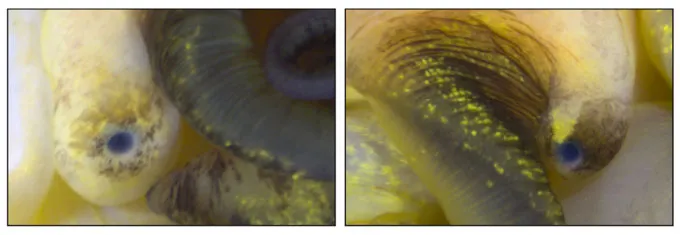Snail Vision Breakthrough Could Illuminate Future Eye Treatments
A surprising creature may hold clues to healing human eyes: the golden apple snail.
This freshwater snail, Pomacea canaliculata, originally from South America, is known more for being an invasive species than a medical marvel. But Alice Accorsi, a developmental biologist at UC Davis, has found that these seemingly ordinary snails have an extraordinary talent — they can fully regrow a working eye in just a few months.
Accorsi first encountered the species during her grad school days in Italy — they were sold in pet stores as tank cleaners. But their resilience and ability to thrive in new environments sparked her curiosity. That curiosity has now led to a discovery that could someday revolutionize the treatment of eye injuries and diseases like macular degeneration.
Her team’s new study, published August 6 in Nature Communications, reveals that apple snails can regenerate a fully functional eye after amputation. Even more astonishing: these snails have camera-type eyes similar to humans, and use many of the same genes in their development — including the vital PAX6 gene, a master regulator of eye formation.

“It’s not that Alice just discovered fire. It’s that she landed on the moon,” said Alejandro Sánchez Alvarado, a developmental biologist at the Stowers Institute, where Accorsi first developed gene-editing techniques for snails. “Now she needs to build the space station.”
Using CRISPR gene-editing, Accorsi disabled key developmental genes in snails, creating lab-ready model organisms — a process that typically takes decades, but which she completed in just a few years.
When a snail’s eye is removed, it regrows within a month. Full visual function — including integration with the brain — takes about three months. That’s a feat humans can’t replicate. Even with eye transplants, there’s no way yet to reconnect the optic nerve to restore vision.
In her experiments, snails lacking the PAX6 gene developed without eyes. These snails couldn’t crawl or find food, suggesting that PAX6 might also influence brain development. Still, they survived to adulthood with hand-feeding from leftover salad bar lettuce.
So how do these snails do it? The answer may lie not in the genes themselves, but in the molecular switches that control them — switches that tell genes when to turn on and off. Humans may possess the same basic genetic “orchestra,” Accorsi says, but might lack the right “conductor” to play the tune of regeneration.
“The same instruments, the same orchestra, the same genes,” Sánchez Alvarado said. “The trick is finding the right conductor.”
Experts like ophthalmologist Henry Klassen of UC Irvine are cautiously optimistic. “This doesn’t mean we’ll be curing blindness tomorrow,” he said. “But it gives us a blueprint — a proof of concept that such regeneration is possible.”
The goal now? Understand the “sheet music” of how the snail regenerates its eye — and see whether the same composition can be played in humans.
